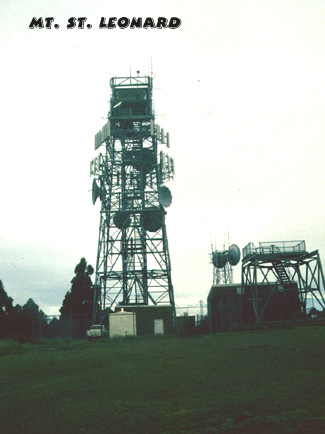
28m (second tower)
34.5m (current tower)
1949 - 1989 (second tower)
1989 - (current tower)
 | Grid Reference | CU 696409 | Department | Melbourne Water | Work Depot | Healesville | Region | Port Phillip East | Grading | Primary | Elevation (ASL) | 1027m | Height | ?m (tree tower) 28m (second tower) 34.5m (current tower) |
Construction | Steel | Cabin size | 3.5m x 3.5m | Public access to site | Yes, to viewing platform (old tower) only | In use since | 193? - 1949 (tree tower) 1949 - 1989 (second tower) 1989 - (current tower) |
CFA Region | 13 - Central |
 |
The original plague is still attached to the leftover viewing platform. Photo by Andre Belterman |
 |
 |
 |
 |
 |
 |
 |
 |
| Original tree tower | Inside current tower | Binoculars, 20x80 | 2000 |
 |
 |
 |
 |
Photos of the 1st steel tower were taken (1983) and supplied by Ian Michie in June 2019 |
 |
 |
 |
 |
 |